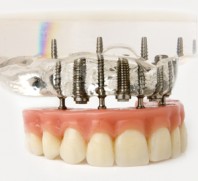- Written by SSI VA
- On Feb 28 2014,
- In Body Contouring Surgery, Plastic Surgery
Liposuction

Inherited traits often prevent people from achieving their desired body shape. Even years of exercise may not yield significant results in certain people. For many, the answer is liposuction, also known as liposculpture, a procedure that extracts fat deposits from specific areas of the body.
A small incision is made in the skin just large enough to accommodate a small hollow tube called a cannula. The cannula suctions the fat from selected areas of the body to create the desired contour. This procedure is ideal for those who are within 30% of their ideal body weight and would like to contour specific areas.
Liposuction is usually performed under general anesthesia and takes from one to 3 or more hours depending on the area and amount of fat being removed. Recovery also depends upon the extent of your surgery. Sutures are removed in one week. Normal athletic activities can be resumed in about three weeks.
Tumescent Technique:
The tumescent technique for liposuction is still the most commonly used method for achieving desired results in contouring areas such as the waist, hips, thighs and buttocks. This technique works by injecting controlled amounts of a special fluid under the skin. This fluid causes the fat to swell such that it is easier to remove.This fluid also numbs and constricts blood flow to the area to reduce blood loss. Because there is so little blood loss, there is minimal bruising.
Medication is also added to this fluid such that post-operative pain is reduced for 18 to 24 hours after surgery. After the fluid is injected, a special hollow tube called a cannula is connected to a suction machine and then inserted under the skin. The cannula is moved back and forth to create thousands of tiny tunnels where the fat has been removed.
After surgery, a compression garment, or girdle, is put on the patient. The tiny tunnels collapse under the pressure of the garment. The garment is worn most of the time for the next 6 weeks.
The tissue continues to contract within the tunnel, creating a slimmer appearance. A new method, called Ultrasonic Assisted Liposuction, or UAL, is now being used in conjunction with tumescent techniques.
Ultrasonic Technique:
A new method, called Ultrasonic Assisted Liposuction, or UAL , is now being used in conjunction with tumescent liposuction techniques. UAL works by converting ultrasonic energy into heat, literally melting the fat cells, allowing the remains to be suctioned away. This method reduces the amount of trauma to the tissue, since less force is needed by the surgeon, leaving fibrous tissue and vascular structures intact. There is minimal blood loss, less bruising, and better retraction of tissue.
1.What is liposuction?(top)
The concept of liposuction is surprisingly simple. Liposuction is a surgical technique that improves the body’s contour by removing excess fat deposits located between the skin and muscle. Liposuction involves the use of a small stainless steel tube, called a cannula (from the Latin word for reed, tube, cane). The liposuction cannula, typically connected to a powerful suction pump, is inserted into the fat through small incisions in the skin, and fat is removed by suction as the cannula creates tiny tunnels through the fat. During the healing process after liposuction, these tiny tunnels shrink and disappear, resulting in an improved body contour.
2. Who is a good candidate for liposuction?(top)
A good candidate for liposuction is defined as any patient who is likely to be happy with the results of liposuction. The best candidates for liposuction are in good health and have realistic expectations of what liposuction can accomplish. Liposuction can provide a good candidate with a significant improvement, but it is unlikely to achieve perfection. There is no definite age or weight limit for patients who are “good candidates” for liposuction. Many liposuction patients are of average size but are concerned about localized accumulations of fat. However, some of the happiest patients have been individuals who are somewhat obese. A good candidate usually has one or more localized accumulations of fat that can be removed by liposuction
3. Who is not a good candidate for liposuction?(top)
A person who expects absolute perfection is not a good candidate for liposuction. Excessively obese patients are usually not good candidates for liposuction. A person who has a serious medical problem is not a good candidate for liposuction.
4. Is liposuction a reasonable treatment for obesity?(top)
Liposuction is not a good treatment of obesity. Liposuction is not effective, even as a last resort, for people who are unable to lose weight by dieting and exercise. Obese patients almost always regain the weight that is removed by liposuction unless there is a dramatic reduction in calorie intake (by dieting) or a significant increase in calorie expenditure (by exercising). Whenever large-volume liposuction has been used in an attempt to treat obesity by surgery, there has been a significant increase in the incidence of serious surgical complications. It is not safe to remove huge amounts of fat by liposuction. It is dangerous to remove more than 8 to 10 pounds of fat by liposuction in a single day. Thus, liposuction will not be of any significant benefit for an obese patient who believes that liposuction will aid in the effort to lose weight.
On the other hand, an overweight person whose weight has been stable for many years and has certain problem-areas of fat may be a good candidate for liposuction. Liposuction in an obese patient is reasonable when the goal is to improve a troublesome body contour area. It is not reasonable to use liposuction as a surgical technique for weight loss.
5. What is a successful liposuction surgery?(top)
A liposuction surgery is a success when the patient is happy with the results. The surgeon’s goal is to obtain an optimal aesthetic result rather than to maximize the amount of fat removed. One of the most common causes for disappointment in the results of liposuction surgery is the removal of too much fat, which produces an abnormal or unusual appearance. The cosmetic success of a liposuction surgery is often the result of removing an amount of fat equivalent to less than a pound or two of butter from a woman’s saddlebag area or from a man’s love handle area. While this amount of fat is relatively small compared to a person’s total body weight, it does produce a dramatic change in the patient’s silhouette.
6. Does liposuction always remove cellulite?(top)
Liposuction improves the silhouette of the body, but does not necessarily eliminate the pre-existing subtle “puckering” of the skin that is often referred to as “cellulite.” Liposuction does reduce the degree of cellulite to a degree but it is unlikely to completely eliminate cellulite.
7. Does liposuction produce permanent results?(top)
After liposuction the body’s new shape is more or less permanent. If a patient does gain a moderate amount of weight after liposuction, then the figure will simply be a larger version of the new body shape. Fat cells that are removed by liposuction do not grow back. As long as the patient does not gain excessive amounts of weight, the new, more pleasing silhouette is permanent. Of course after liposuction the clock keeps ticking, and advancing age will produce the usual changes in the shape of the body associated with the aging process. If a person gains weight after liposuction, she/he will not accumulate as much fat in the treated areas as would have happened if liposuction had not been done.
8. Does the fat come back in other spots after liposuction?(top)
If a patient does not gain weight after liposuction, then fat does not accumulate in other areas of the body. However, if a patient gains a significant amount of weight, say more than 10 pounds (5 kg), after liposuction, then the fat must go somewhere. In fact, the fat accumulates in every area of the body in proportion to the amount of fat cells in each area. Areas where fat cells have been removed by liposuction will accumulate relatively little fat, while areas not treated by liposuction will collect relatively more fat. For example, if a woman gains weight after liposuction of her hips, outer thighs, and abdomen, then most of the fat will be deposited elsewhere such as the woman’s breasts, face, back and legs.
9. Does liposuction cause dimpling or indentations in the skin?(top)
Dimpling and indentations in the skin is a known risk of liposuction. However skin irregularities are unusual in the hands of a skilled surgeon. The use of large diameter cannulas tends to increase the risk of irregularities, while the use of microcannulas (less than 2.8 mm in outside diameter) reduces this risk. The use of microcannulas and multiple adits (very tiny 1.5 mm round holes placed in the skin) allows the surgeon to make a criss-cross pattern of tiny tunnels throughout the fat which produces smoother liposuction results compared to using larger cannulas and only two or three entrance incisions. When large cannulas are used, any inadvertent passage of the cannula too close to the skin may leave a depression or furrow, whereas one pass too close to the skin with a microcannula will not leave a visible depression.
10. What Alternatives Are There to Liposuction?(top)
Liposuction is never absolutely necessary. If you decide that liposuction is not for you, then you may consider the following alternatives to liposuction. Weight loss without liposuction can produce excellent aesthetic results. Weight loss can be achieved by dieting (decreased calorie intake) or by increased exercise (expenditure of calories). An alternative to abdominal liposuction is a tummy tuck.
by SSI VA
Categories
Recent Posts
-

Dental Implants
Dec, 30, 2015
-
General Dental Crowns
Dec, 30, 2015
-
Terms & Conditions
May, 26, 2015
-
Payment & Privacy Terms
May, 26, 2015
-
Dental Surgery
May, 26, 2015
-
Orthopedic & General Surgery:
May, 26, 2015
-
Eye Surgery
May, 26, 2015
-
Plastic Surgery:
May, 26, 2015
-
Site Map
May, 26, 2015
-
Links
May, 26, 2015














Leave a Comment